“We can be a prism and not just a reflection of society. This is the true meaning of being an artist. We can also enlighten people through our work and put more attention on the return to nature. We are in the dark ages and need enlightenment, a new Renaissance.” – David LaChapelle
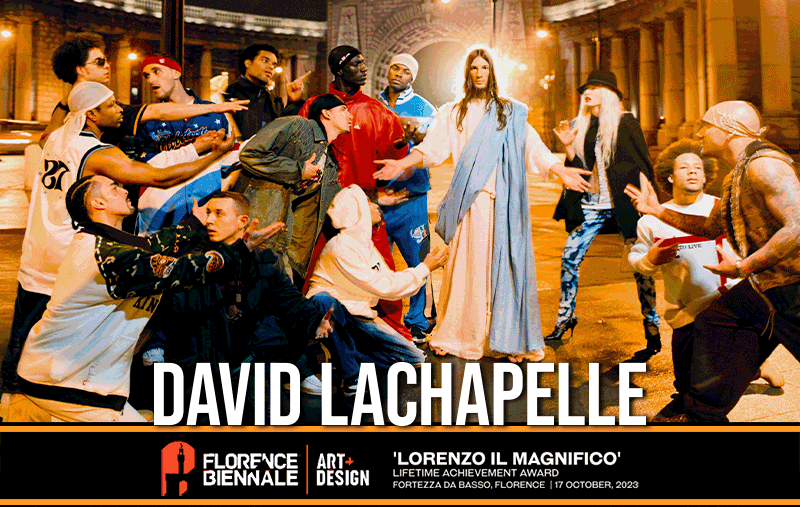
‘Lorenzo il Magnifico’ Lifetime Achievement Award
Fortezza da Basso, Florence | 17 October, 2023
LaChapelle is honored as the recipient of the ‘Lorenzo il Magnifico’ Lifetime Achievement Award at the “XIV Florence Biennale. International Exhibition of Contemporary Art and Design,” for his unparalleled influence, imaginative artistry, and profound social messaging that has inspired artists worldwide. The prestigious award ceremony will take place at the Fortezza da Basso in Florence on October 17, 2023.
David LaChapelle

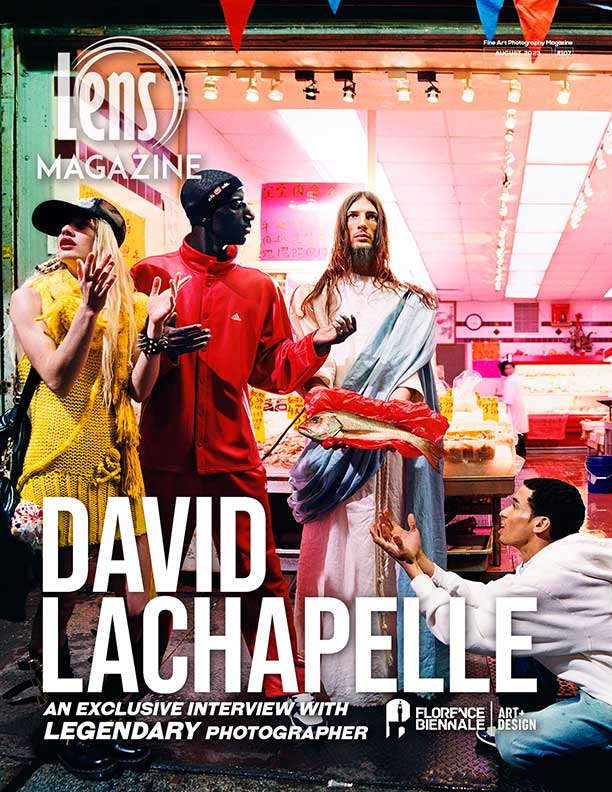
Right: Lens Magazine August Issue #107. Digital Version.
David LaChapelle, born in 1963, has redefined photography through an avant-garde perspective. Beginning as a painter, he evolved into a photographer, introducing a unique technique: hand-painting negatives to infuse his work with captivating colors. Arriving in New York at 17, LaChapelle’s undeniable talent captured the attention of no other than Andy Warhol, paving his way to Interview Magazine.
His artistry is characterized by a mastery of color and narratives that stretch the imagination. Anticipating his influence, The New York Times projected in 1991 that he would follow in the footsteps of Mr. Avedon. Noteworthy anthologies like “LaChapelle Land” (1996) and “Heaven to Hell” (2006) have showcased his brilliance. Expanding his creative horizons, LaChapelle ventured into film, gaining global recognition with his 2005 feature “Rize.”
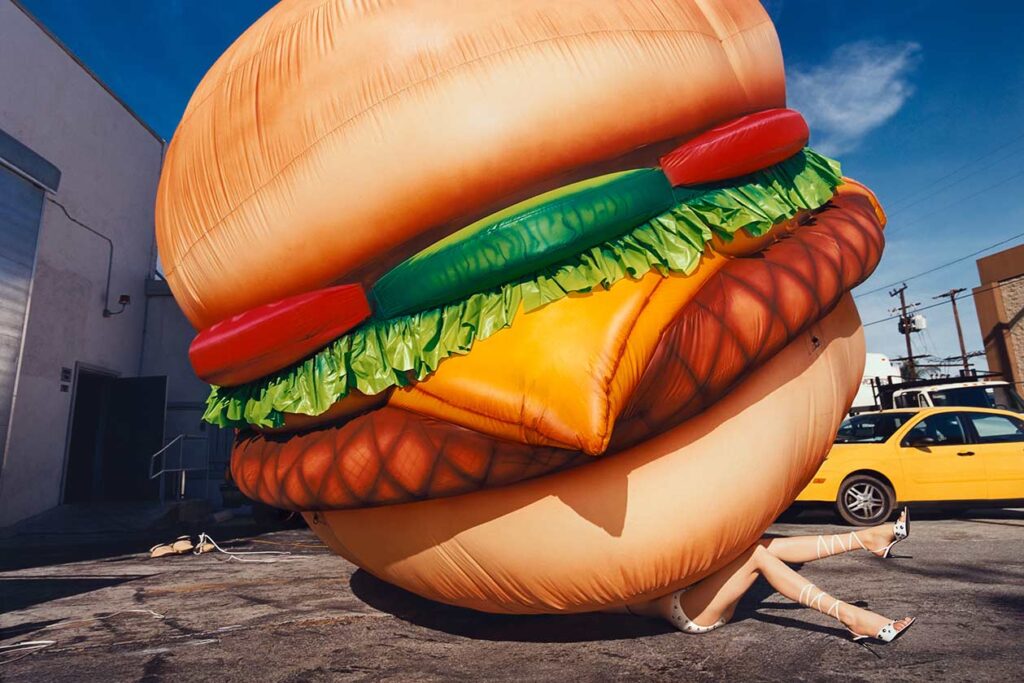
Los Angeles, 2001
David LaChapelle © All rights reserved.
LaChapelle’s lens has immortalized artists, celebrities, and athletes, transcending the confines of traditional portraiture. His impact reverberates across magazines and esteemed galleries like London’s National Portrait Gallery. With a remarkable fusion of commercial acumen and artistic genius, LaChapelle’s collaborations with renowned galleries cement his stature as a creative force. His imagery sparks contemplation, inspiration, and an entirely new dimension of visual storytelling.
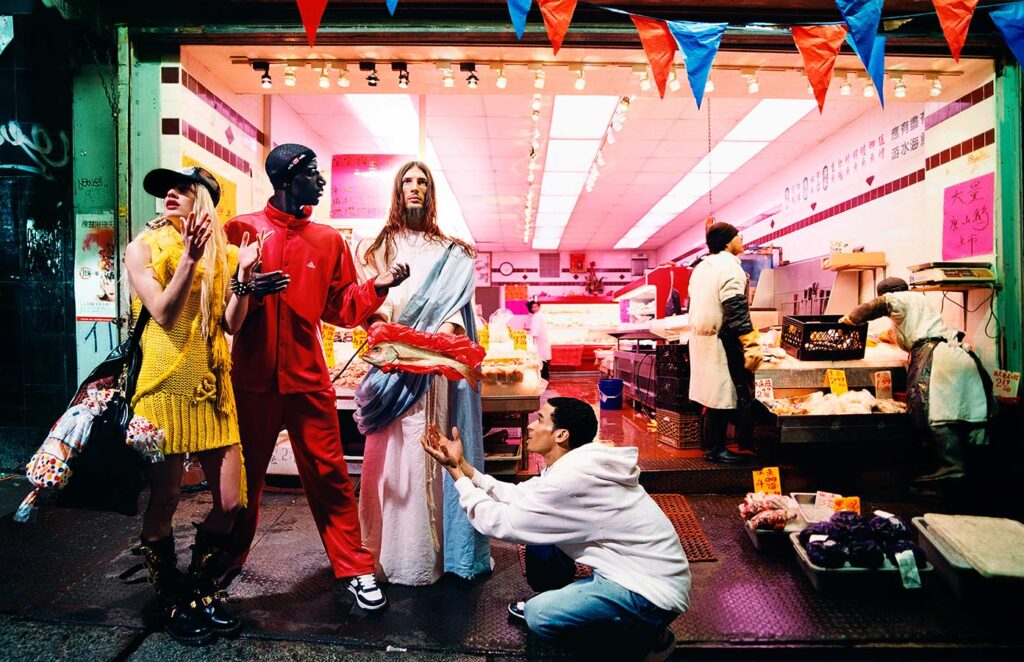
New York, 2003
David LaChapelle © All rights reserved.
An Exclusive, Intimate Interview With Legendary Photographer
David LaChapelle | By Jose Jeuland
Jose Jeuland: Thank you for this interview, David; we first want to congratulate you for being awarded THE LORENZO IL MAGNIFICO LIFETIME ACHIEVEMENT AWARD by the Florence Biennale.
Your work will also be featured in a large-scale exhibition at the upcoming XIV Florence Biennale (14-22 October 2023). What will you be exhibiting there?
David LaChapelle: Thank you! Yes, It’s exciting, and I plan to show some never-before-seen work at the Florence Biennale. We’re just in the process of choosing the frames and the sizes. We will exhibit 14 pieces from my new project, ‘Stations of The Cross,’ which has been in progress for over a year. I am a firm believer, and this project came to my mind through prayer.
The central figure of Jesus is portrayed by the Italian artist Mario Molinaro, also known as Tedua.
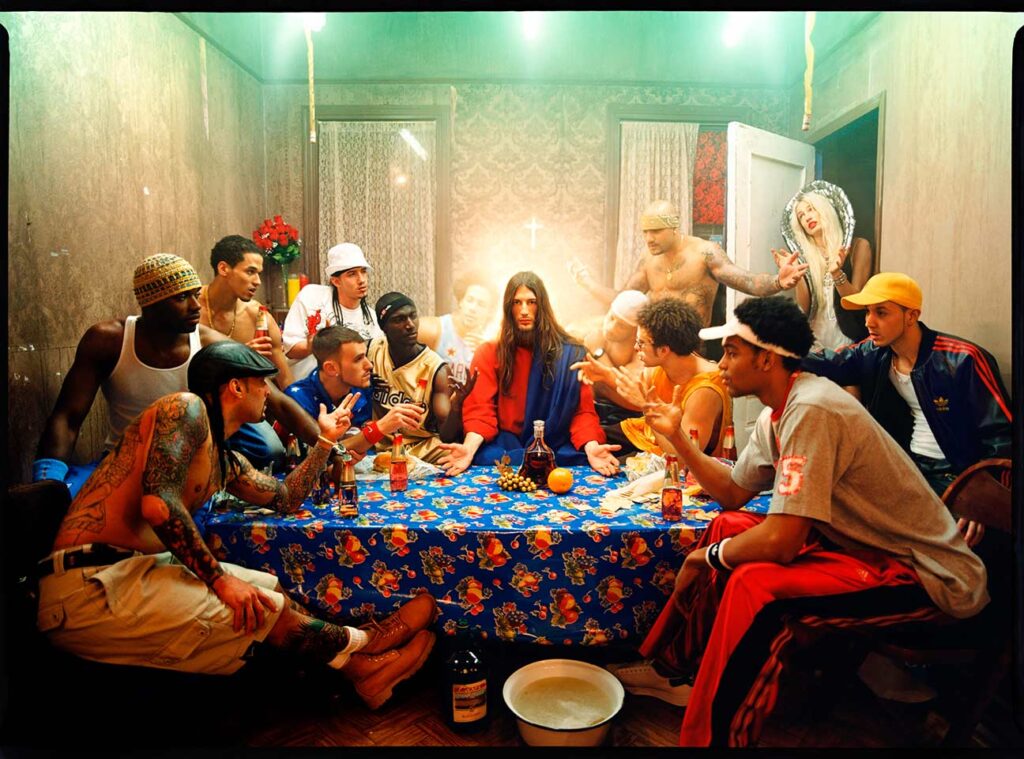
New York, 2003
David LaChapelle © All rights reserved.
Jose Jeuland: You have been one of the most successful photographers for decades. Your work has been exhibited in museums, galleries, and auctions for over thirty years. Your work consistently makes waves in the art market world, and the younger generation enormously admires your projects for pop star singers and successful rappers.
How do you feel about being an influential photographer internationally for decades?
David LaChapelle: Being influential, especially for the young generation, is a great privilege and a tremendous gift.
I love doing these projects and working with unique characters. It is an essential mission with a higher purpose. It’s a way to connect with young people and bring them to museums and galleries; that is the main point- taking them off Instagram and bringing them to an actual museum. Then my work serves as a bridge for a higher purpose. We need to expose this young generation to art, so they will see all kinds of contemporary art. They are so mesmerized by what they do see.
So doing pop stars’ photoshoots brings young people into the art world. Things have gotten very dark in popular culture.I still photograph the people who make it, but I won’t be involved in dark stuff. That’s not for me.
Jose Jeuland: I can see the wild green landscape behind you in this Zoom video call. For how many years have you been living in Hawaii?
David LaChapelle: I have been living here in Hawaii for over eighteen years. Wonderful years with a solid connection to nature; I’m very grateful for this nature’s beauty, which inspires me to pray daily, thanking God for my beautiful time here.
Sometimes living in cities can make you feel disconnected from nature, and it’s easy to forget that we’re part of it. We’re part of this vast ecosystem, and our life choices matter.
I never know what day it is out here because my time loses me- or I lose time. But I wake up and have unique new ideas in my mind. This place is inspiring.
Jose Jeuland: You are a child of immigrants; your mother was a refugee from Lithuania who arrived at Ellis Island in the early 1960s. Do you believe those years of childhood influenced your work in some way? Did you grow up in an artistic environment?
David LaChapelle: Well, I had a wonderful childhood with great supportive parents. They were really excellent. I had a very innocent childhood. My parents lived in a wooded area, allowing me to enjoy playing in the woods.
My mom was an immigrant from WW2. My father was great and kind, helping his family through the old times of economic depression. He was the first in his family to attend college on a scholarship. So I come along, they’re newly married. He met my mom during three days out on the boat from Lithuania. And they both spoke both languages.
My sister Sonja, worked in the tobacco fields, the same tobacco fields where Martin Luther King worked when he was 15. King wrote to his parents that he loved this little town of Simsbury because nobody looked at him funny at Church. I was so proud. It’s the opening page of the autobiography of Martin Luther King. Just a side note, but tobacco is a thing. It’s part of my family story, where my parents met, working in the cigar tobacco fields of Connecticut back in the fifties and sixties. My father was a good Catholic man from a good Catholic family; his brother, Hector La Chapelle, was a priest. He’s still alive, retired, and lives in Connecticut.
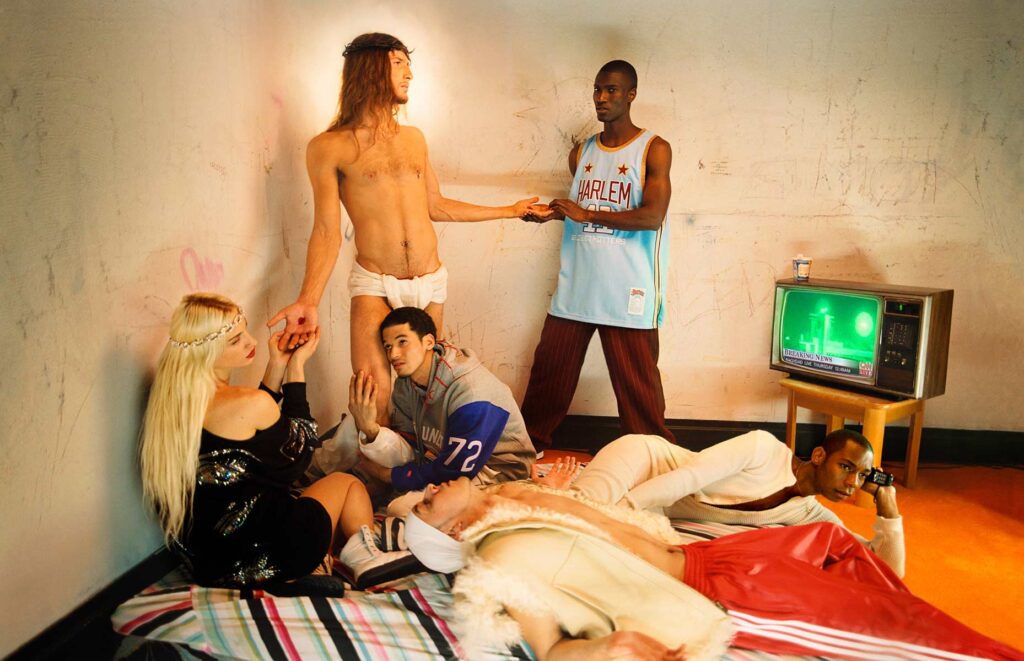
New York, 2003
David LaChapelle © All rights reserved.
Jose Jeuland: Is your art mainly influenced by your childhood as growing up to immigrant religious parents?
David LaChapelle: Well, my mom’s religion was nature. So this is the duality that influenced my artistic point of view. My mom found the Cathedral of God. She taught me from a young age that nature is God’s cathedral. She loved walking me through the woods. We moved several houses during my childhood, and she always found a home with nature nearby. The last place was in Farmington, Connecticut; that’s where I had the privilege of taking photographs- the earliest photographs in the eighties with the angels. With my father, I went to Church. He taught me how to pray a certain way. And my mom taught me about God being in nature. So I had this fantastic duality. It definitely influenced my work. I find God in both places.
Jose Jeuland: Now I understand better some of the photography series you made in your studio back then in Los Angeles, where you’ve made a setup of a jungle, a green forest with many flowers. This is where the connection to nature comes from.
David LaChapelle: Yes. Well, for the last eighteen years, since I came here in 2005, living here in Hawaii, I have had a strong connection and a growing love for nature, but I have always felt the need for gesturing nature. So it’s nice, a nice circle.
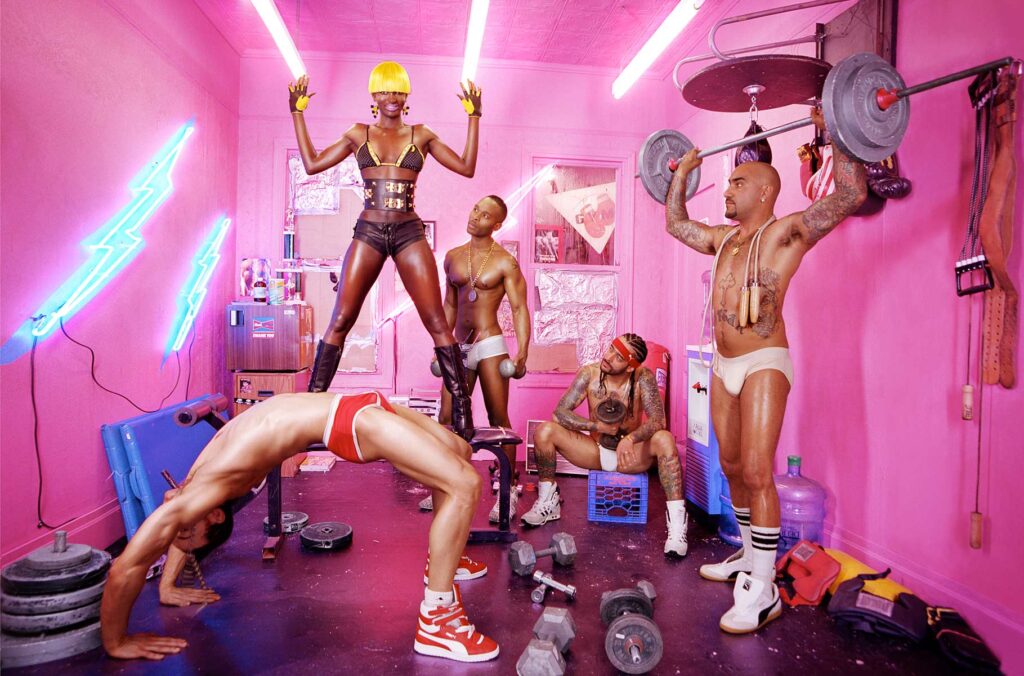
David LaChapelle © All rights reserved.
Jose Jeuland: When you left home at fifteen and moved to NYC to work in Studio 54, you became familiar with the contemporary art scene and the artists in N.Y. Was it a natural transformation for you? Is this where you became acquainted with Andy Warhol, or was it just later on, at age 17, when he hired you as a photographer for Interview magazine while you were still in high school?
David LaChapelle: Yes. I dropped out of regular high school for two years. I was fourteen years old when I was introduced to Studio 54. At that age, I started going to clubs, and there was one gay club in Connecticut that was kind of famous. I went there with my friend a few times. It was amazing. Beautiful people dancing. with a strong feeling of connection, like we are family. I got all my people with me. It was beautiful. Back then, we were friends, all together. All the crazy people from this little town would meet at this gay bar.
And in that gay bar in Connecticut, I heard of Studio 54 nightclub, which opened in 1977. So it was time to go.
I was 14 years old. I went with my boyfriend. We got on the train to Grand Central. We had an older friend that worked there. We all got really dressed up. I wore blue jeans, probably Levi’s, and a white open shirt. I looked good and really tan.
We crossed the street, and the doorman finally saw us from a mile away across the street. They broke the line, came to get us, and pulled us through the line. And everybody always asks, how did you get in at 14? I said, ’cause we’re pretty, and we were 14-year-old boys. What do you think?
All the boys asked us to come party with them. But no, we’re not going home with anyone else. They all wanted us to come to their party or follow us around. But I didn’t care about any of that. I just cared about the music.
Studio 54 made it a lot easier to drop out of school. At last, I found my people after years of getting bullied at school. I love my parents and was having a great time at home, but this was the reality in these years.
Jose Jeuland: At that point, did you start your journey in photography? Were you taking photos?
David LaChapelle: No, I just did drawing and painting. At that age, I thought I was going to be a painter. I thought photography was very complicated.
In Studio 54, I knew the people but didn’t talk to anyone or have anything to show them. I saw them every night. I saw Andy Warhol, my hero, and George O’Keefe on the first night. But we didn’t communicate then.
Back home, my counselor told me about this fantastic Art high school that I got accepted and learned photography in my senior year; after working at Studio 54, I got this great opportunity to return to high school to finish my degree. That’s where I learned photography.
It was an art school, primarily for dancers, which became my first subject, the dancers. And I put them in Renaissance positions in my very first black-and-white film. 36 Tri-x, 36 frames. Just after graduation, I came back to NYC with my photography portfolio.
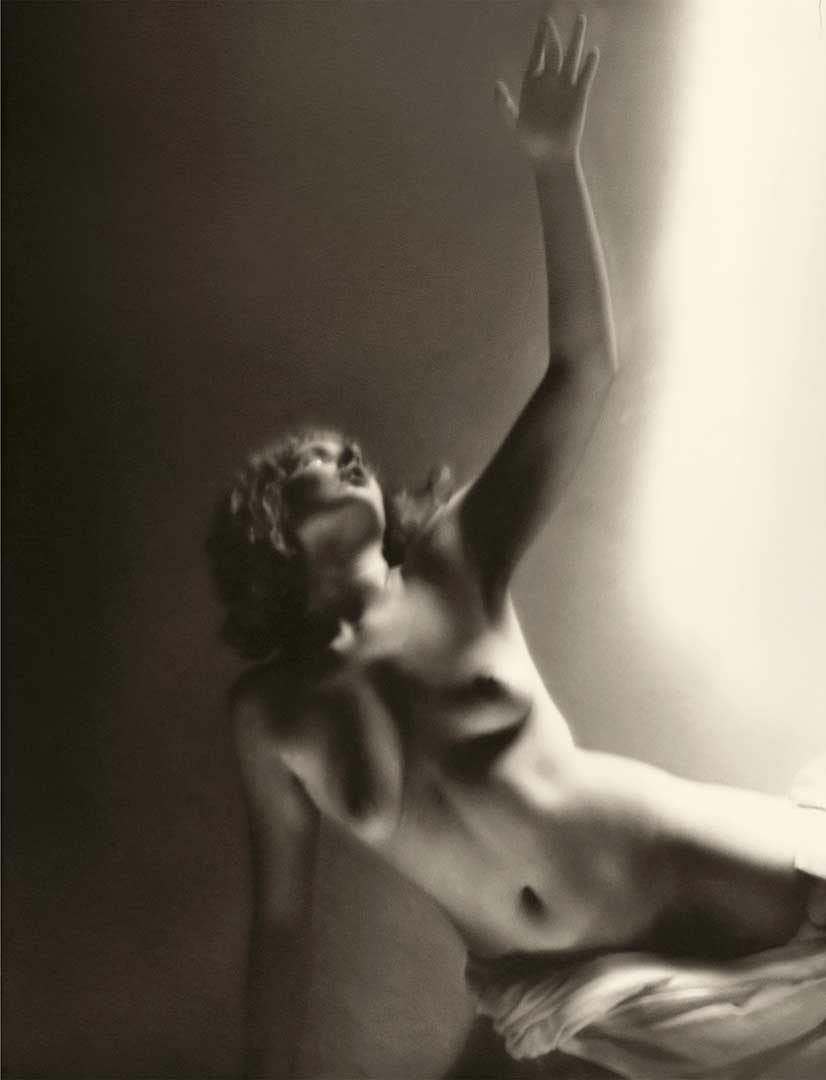
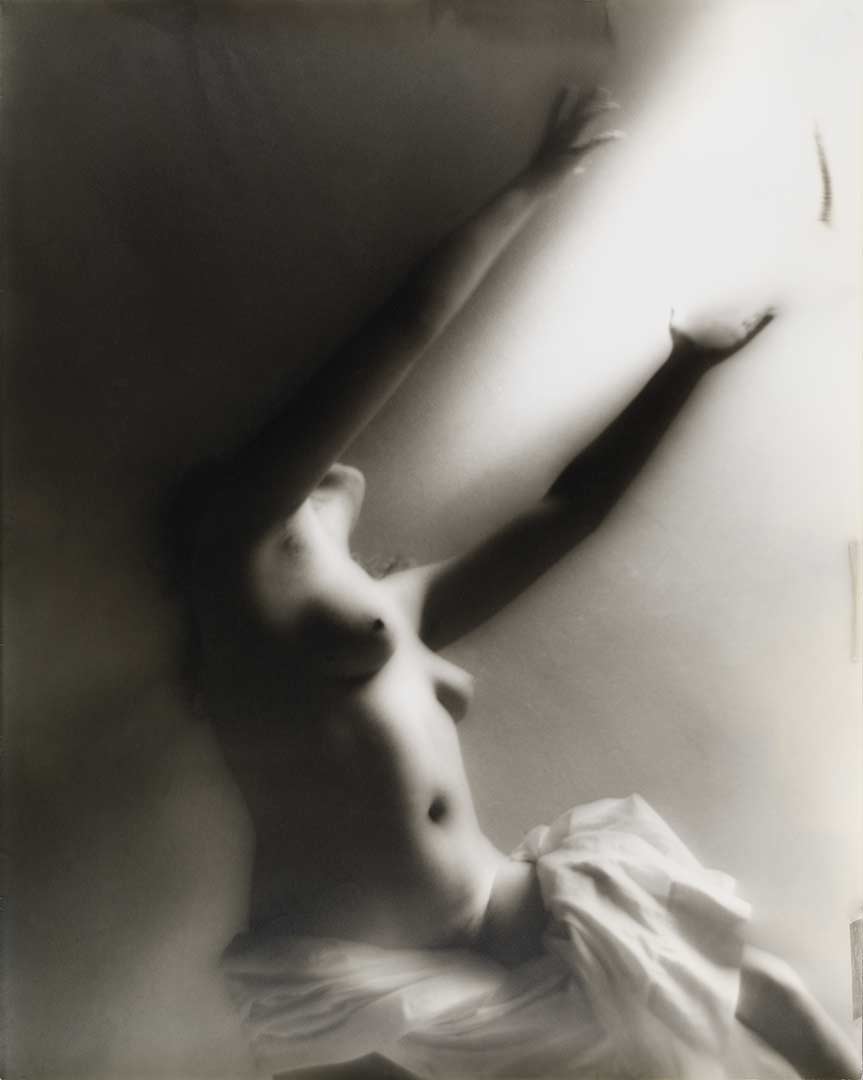
New York, 1984
David LaChapelle © All rights reserved.
Jose Jeuland: Do you still have these first projects from the study years?
David LaChapelle: I don’t have the contact sheet, and unfortunately, it got taken away by a dubious gallery owner at the time. I even developed my film. I spent years learning the Dark Room. I worked in Dark Room for twelve years in New York, then worked six years in black and white and six years in color, all analog. I call this period “the Dark Ages.” Dark rooms and nightclubs.
Jose Jeuland: You feature religious scenes combined significantly influenced by the Renaissance Masters’ artistic style. You use young energy, extreme color explosion, strong sexuality, and sometimes nudity. At what point did your creative work begin to focus on religion and color photography?
David LaChapelle: Well, my first show, “Good News for Modern Man,” 1984, was very religious. All of the photos were created by using the dark room. This show was very successful; that’s when I had a reason to talk to Andy W. because we sometimes met each other in Studio 54.
It was a magnificent period, like an artistic utopia. I was living in the East Village, which was incredible. Went to the Tony Shafrazi Gallery in Soho and met Keith Haring and Jean-Michel Basquiat. It was so inspiring. Andy was at the Pretty In Pink band concert, and we all winded up in the VIP room. I remember wearing Like a Pirate, designed by Malcolm McLaren, who started the ‘Bow Wow Wow’ and ‘Sex Pistols.’ Until AIDS happened.
My first boyfriend, whom I met outside of Studio 54, who I lived with, died of AIDS at 24. It made me closer to God. When your friends around you start dying, you must find God or go the other way. I found God, and it’s been with me ever since.
I found God within me as an adult in a more profound way than I think I ever had.
Andy liked my work, and I started working for his magazine, which led to other great experiences. I started getting into color in 85-86 and exhibited my work in solo shows.
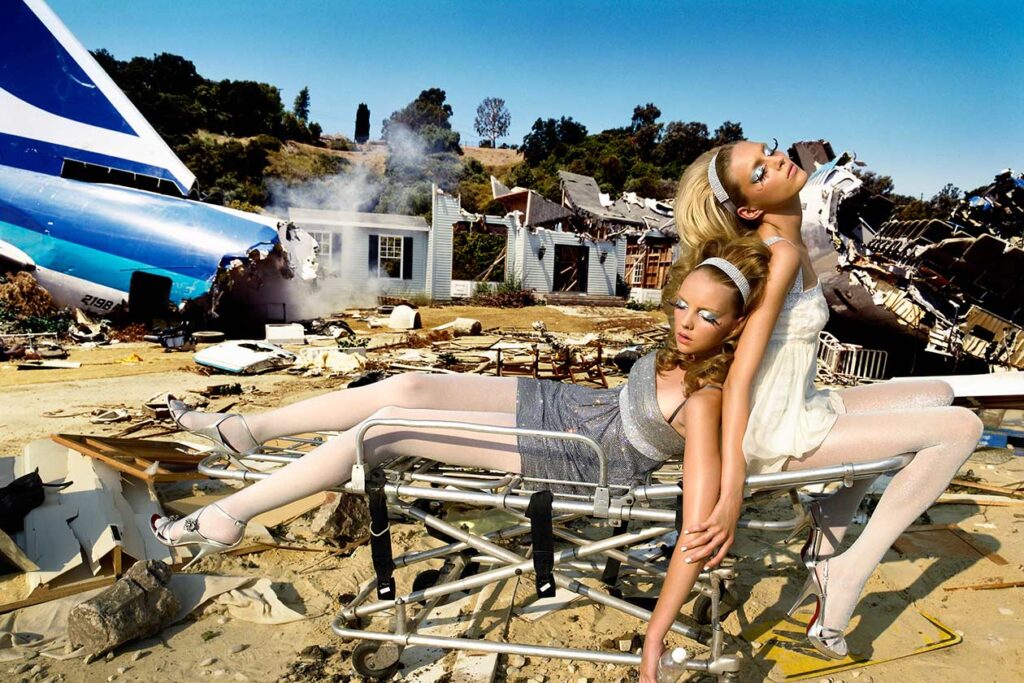
Los Angeles, 2005
David LaChapelle © All rights reserved.
“I see myself as a follower of Christ. A one hundred percent follower of Christ. “
– David LaChapelle
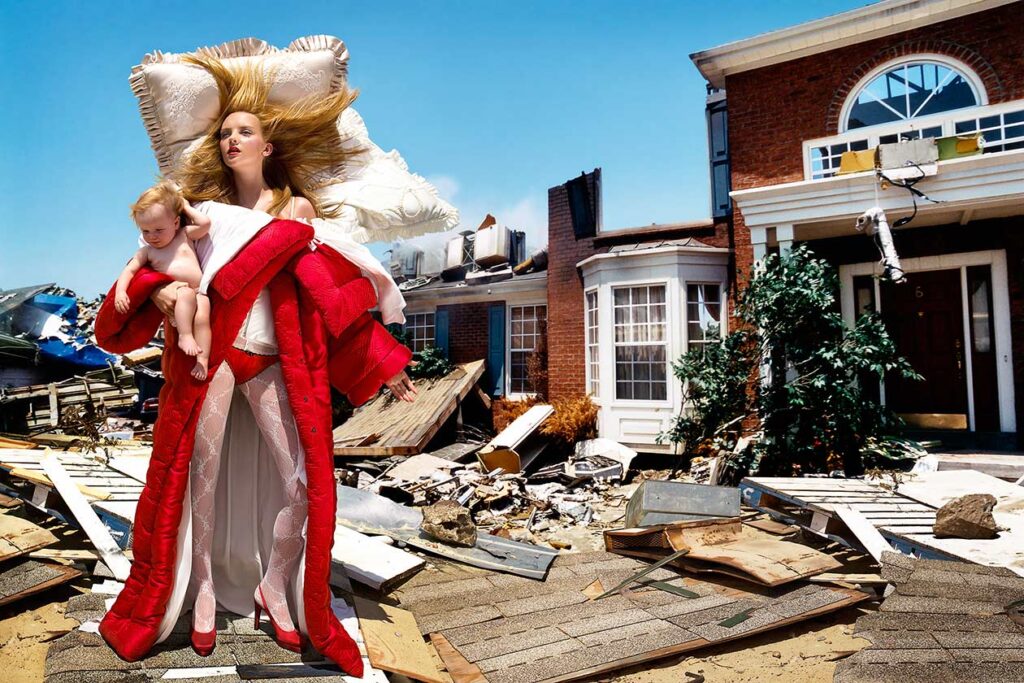
Los Angeles, 2005
David LaChapelle © All rights reserved.
Jose Jeuland: What is the central message in your work? What do you try to give the viewers through the religious and sexual scenes?
David LaChapelle: I see myself as a follower of Christ. A one hundred percent follower of Christ.
God created art. Look at Botticelli, for instance; I’ve done nothing that Botticelli wouldn’t have painted.
He did religious work and secular work. God created Botticelli and allowed him to create art the way he did. The world is getting into a black era, and by creating religious scenes, I’m trying to be one hundred percent honest about my beliefs and who I am today.
Looking back, I’ve nothing to be ashamed of my past; it led me to where I am today. Maybe I am sorry for the way, but I would’ve never taken it that far. Regarding art, for example, there’s a line I would never cross, like in pornographic photography. I can create extreme scenes, and it would be with a line in mine. So I’m reverting the other way and really reacting to what the culture is doing. In this era, we need to be bold.
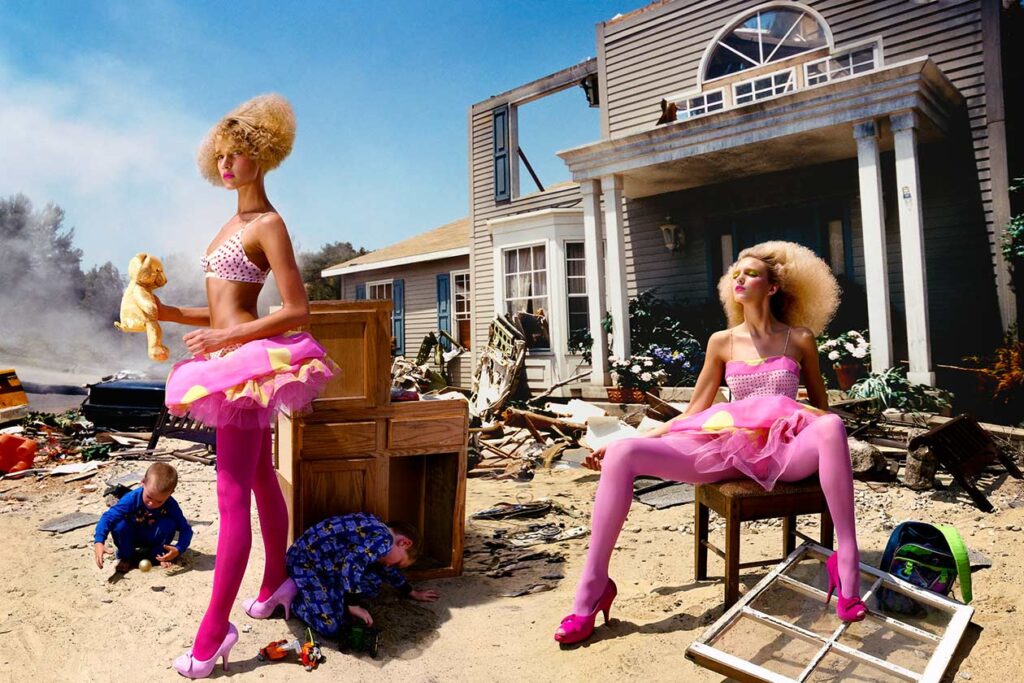
Los Angeles, 2005
David LaChapelle © All rights reserved.
“Looking back, I’ve nothing to be ashamed of my past; it led me to where I am today. Maybe I am sorry for the way, but I would’ve never taken it that far”. – David LaChapelle
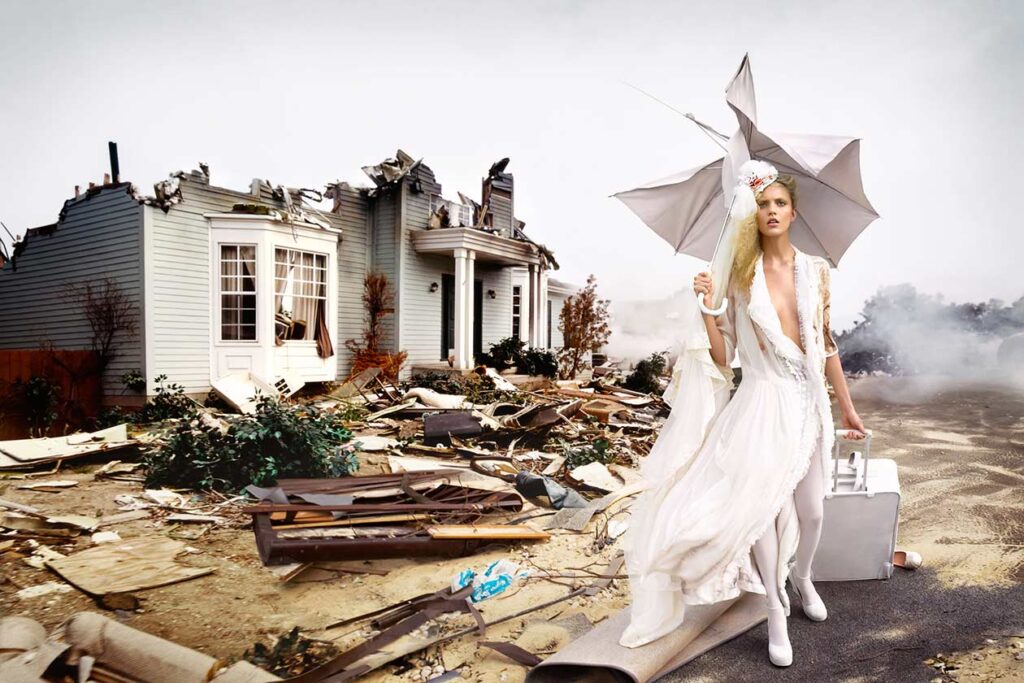
Los Angeles, 2005
David LaChapelle © All rights reserved.
Jose Jeuland: Are there any projects you regret creating over the years?
David LaChapelle: There are, but I’ve forgiven myself for that just as I forgave everybody else.
I regret mostly projects that may have been misinterpreted; they were never done with a blasphemous heart. But I can see now, looking back with a different perspective, that some of the images I made could be perceived in a dark way.
The projects were done in a way that was unintended because I was ambiguous. I wasn’t direct enough. Most of my projects were as a metaphor. We were working so fast over then that I was going very intuitively. For example, the work “Addicted to Diamonds” with the amazing-looking transsexual woman Amanda Lepore in New York, 1997.
It was all about materialism. Amanda Lepore was a good friend, and it was the first story shooting together for a magazine called Visionaire. This work got misinterpreted. Some thought the image was glamorizing drugs, but it was about being addicted to materialism.
I realized my audience is not picking up and not spending time on it. It’s not that they’re not sophisticated; it was the beginning of their attention spans getting shorter, even before TikTok and Instagram.
I decided I’ve got to be more precise. Most people are not spending time reading into the meaning. I’ve gotta be more direct and honest. If it’s in the context of a museum show, it’s different.
Looking at my published books, I present a utopian world of imagination and beauty. All these books bring the viewer to ask questions regarding personal life scenes and the state of the world today, such as global warming and its effect on our lives.
For example, the hurricane pictures from the series House at The End of the World, where the house is broken behind. It is about climate change and the house in a world of disaster. I was shooting that for the Italian Vogue Magazine. And just after it was published, this massive tropical cyclone, Hurricane Katrina, struck the southeastern States in late August 2005. The effect looked like in the photos. So people were calling the magazine and asking if I exploited this tragedy… Although the shooting was before Hurricane Katrina struck.
This climate change subject has been on my mind since we did that show at Tony Shafrazi Gallery in the early eighties. Since then, it has been thirty years of a critical difference. The AIDS virus back then was a warning. The globe has an immune system problem. Autoimmune disorder.
Did those pictures have any effect? No, I don’t think so. I don’t think anyone understood them. Maybe one or two writers. Maybe some artists. Some people have.
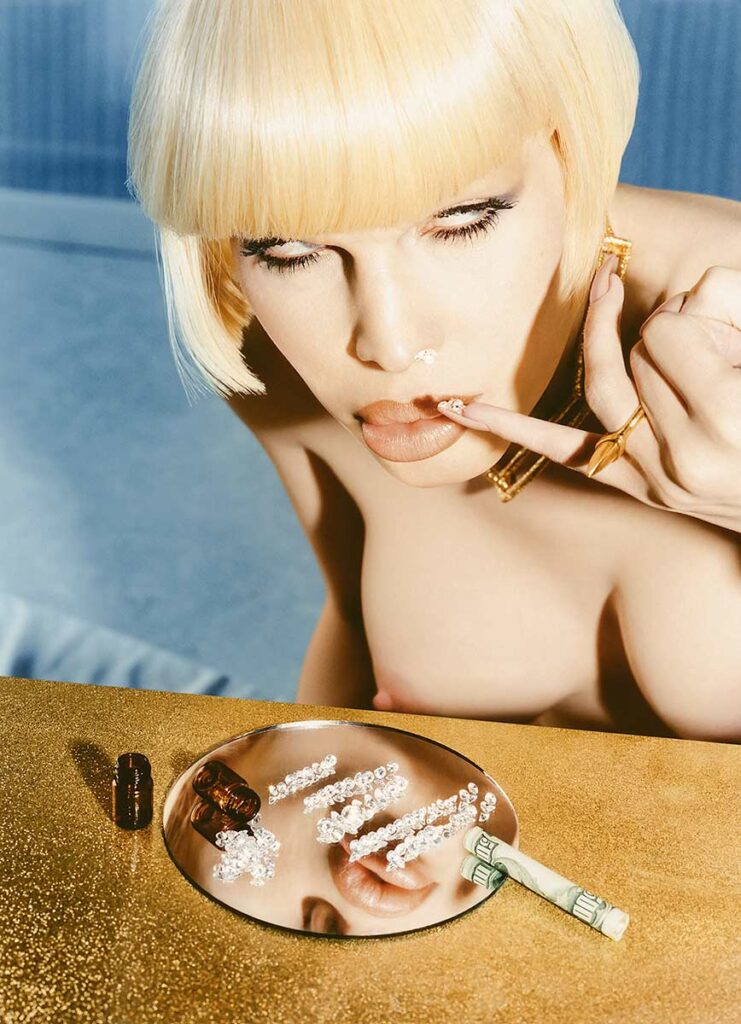
New York, 1997
David LaChapelle © All rights reserved.
Jose Jeuland: Who is involved in the process? Do you have the same team for all shooting projects?
David LaChapelle: Most of my team members have been working with me for years. Kumi started as an intern who runs the New York office; now, she’s running the office that ships the work to Europe. Her main job is keeping track of the printing from my master prints, and she is so good at her job. Johnny’s been on my team for 20 years. Ghretta worked for 25 years, and Christopher for at least 25 years. So I have this excellent team that has been with me for many years. I’ve got very good people around me. I’m fortunate, and also, what is so incredible is that some of them are really close friends.
Jose Jeuland: And are you still shooting a little bit in analog, or are you entirely working in digital?
David LaChapelle: Well, that’s interesting; I worked my whole life in analog, so everything had to be in front of the camera. It was the same approach as how I felt with money, never buying anything on credit because I wanted to know I had it; I always paid off everything in cash. It’s quite the same with photography, as I wanted to see everything in front of the camera. Once I picked up a camera, I never really drew again.
I had been drawing my whole life, but it was a preparation sketch for photographs. Some of them came better than others. Although I mainly work in digital, I still love analog and the dark room.
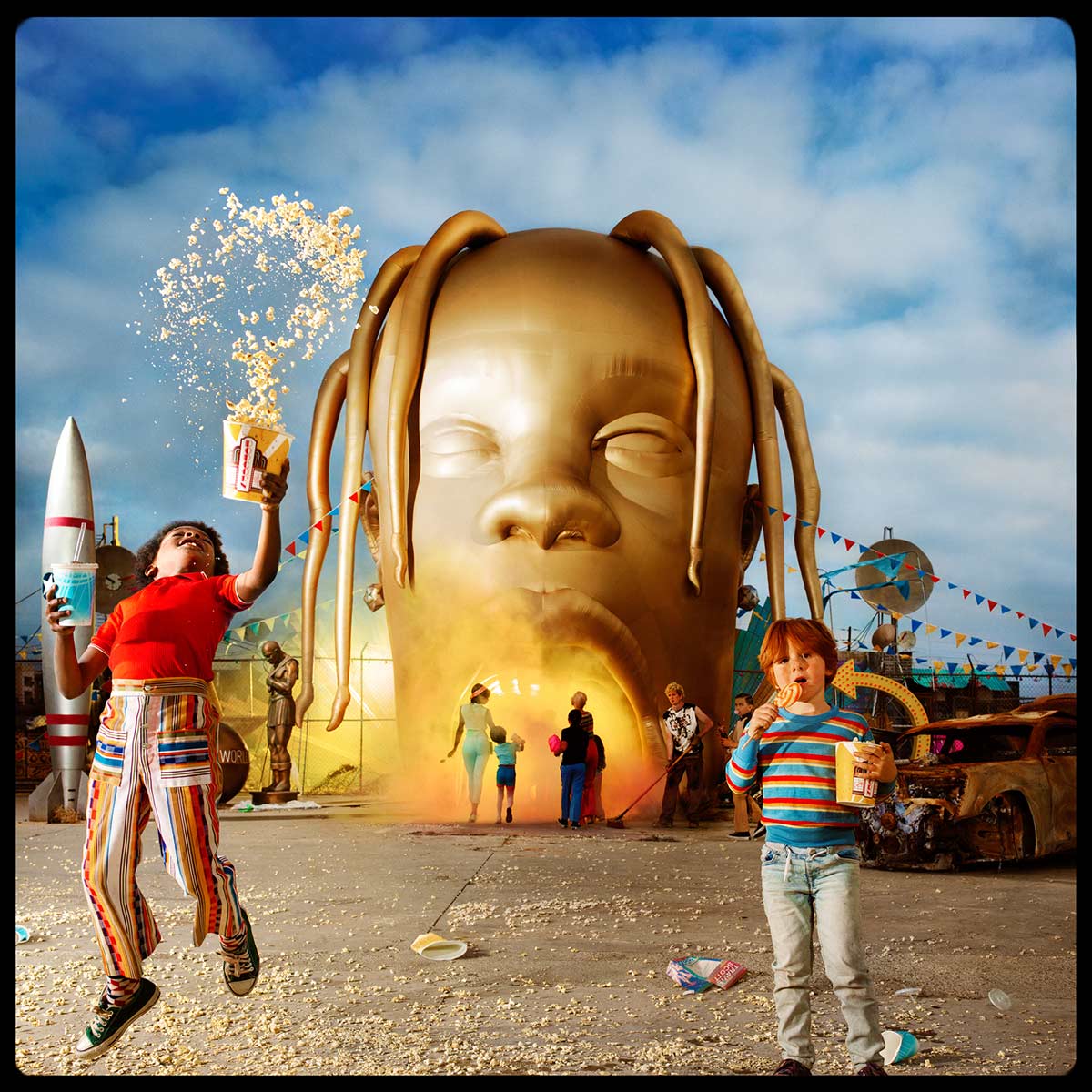
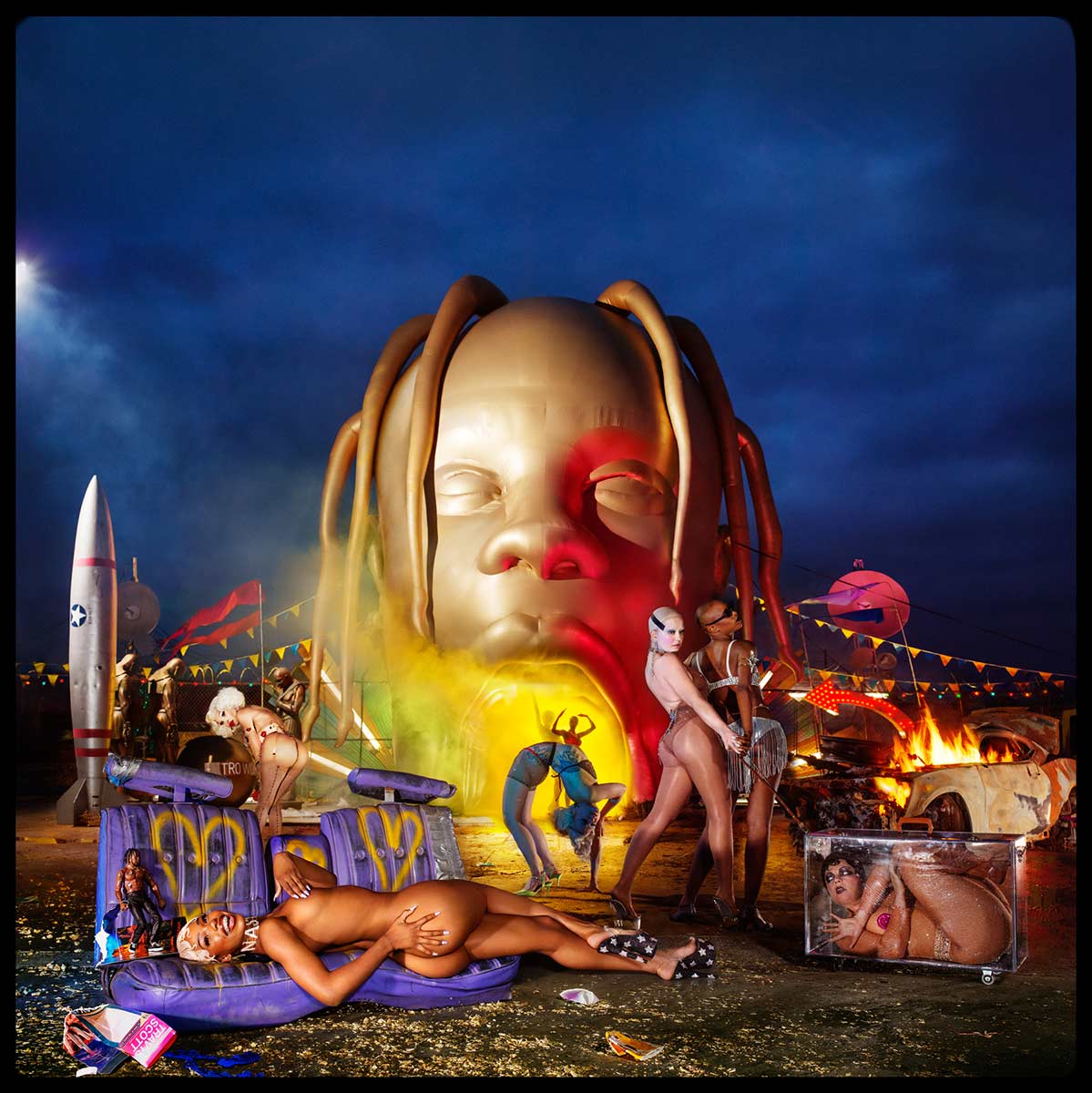
David LaChapelle © All rights reserved.
Bottom: Astroworld: Night. Los Angeles, 2018
David LaChapelle © All rights reserved.
Jose Jeuland: What would you say is your new goal? You achieved so much and have a magnificent career positioning you at the top of the field internationally. So what is your purpose in life?
David LaChapelle: If you had asked me this question years ago, my goal would have been to live in the jungle. I have prayed for a cabin in the woods since I was seventeen in New York City. I wanted to have a place in the woods, to be able to support myself with photography and eat vegetarian food, and to be able to afford vegetarian food at this restaurant called Angelica’s in the East Village at that time.
My main life goal these days is simply to be, love, and see love clearly. To be closer to God and to follow God’s will and path for me, and most importantly, to be a kind person. We all work in progress. We all have a history. Every saint has a past. Every sinner has a future.
“We need to expose this young generation to art so they will see all kinds of contemporary art. They are so mesmerized by what they do see. So, doing pop stars’ photoshoots brings young people into the art world. Things have gotten very dark in popular culture.” – David LaChapelle
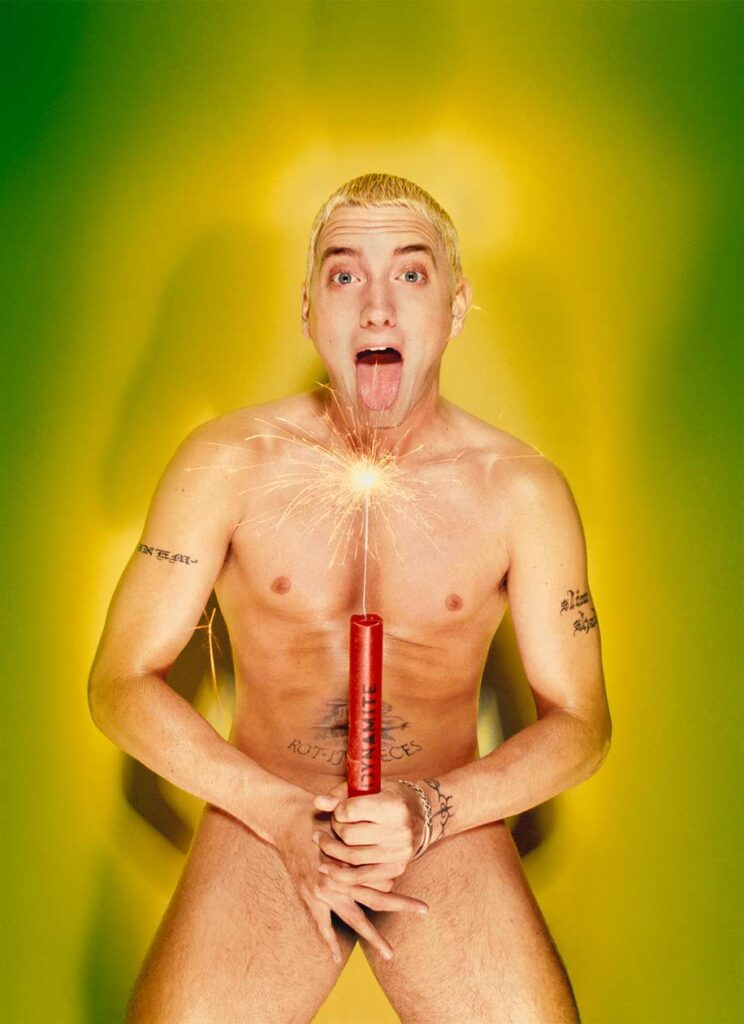
New York, 2003
David LaChapelle © All rights reserved.
Jose Jeuland: And what are your feelings regarding social media? Do you spend time on Instagram checking other photographers?
David LaChapelle: I love this question because I get anxious looking at social media. I can’t even look at it seriously. When I come out here, I get too sensitive in the jungle. It bothers me that everything has become so cheap on all social media channels. We are in a dark era.
I’m coming from the times of exhibitions and the explosion of art in the East Village. Pop art with Andy Warhol, Street Art with Keith Haring, which made waves, and street artists like Jean-Michel.
The photographer Cindy Sherman and then Nan Goldin with “The Ballad of Sexual Dependency” really moved me; ballads are sad songs, and I cry; I weep every time I look at her photographs. I really admire her so much. It was an absolute explosion of art then. And to answer your previous question, I grew up on analog and physical prints.
I know shooting digitally is much more economical in the environmental sense. And I like the lighting in digital.
You get more depth of feeling. But if you just take photos without printing them, you lose 50% of the artwork’s meaning.
So Instagram is just a fast way of featuring, and it only has some of the partial meaning of photography.
With the phone’s development, it’s really nuts; anyone can take a picture now and be a photographer. Everyone has access to writing with a pen and paper, but there were, and still are, very few great writers. There are a handful of people in different mediums. But the number of great writers has remained the same, even in the digital age; only a certain number of artists get featured worldwide in the arts field and art market. And much of it is from blessing, circumstance, and hard work. Of course. Hard work and discipline.

David LaChapelle © All rights reserved.
“In both photography and art, there’s a need for more love and light in all aspects. Art created from a pure base, with one hundred percent honesty, will get us in the right direction.” – David LaChapelle
Jose Jeuland: So what do you think about the A.I. field progress? Many photographers explore it today and sell their AI work on NFT auctions.
David LaChapelle: I have no idea. I avoid that because I don’t want to know about it. I know it’s out there. It will be developed further, and people will use it. I just do what I do. Like Andy once said while he gave me this one piece of advice; “Do what you do. You’ll go in and out of style, but eventually, it will come back into style.” So I’m just doing what I do.
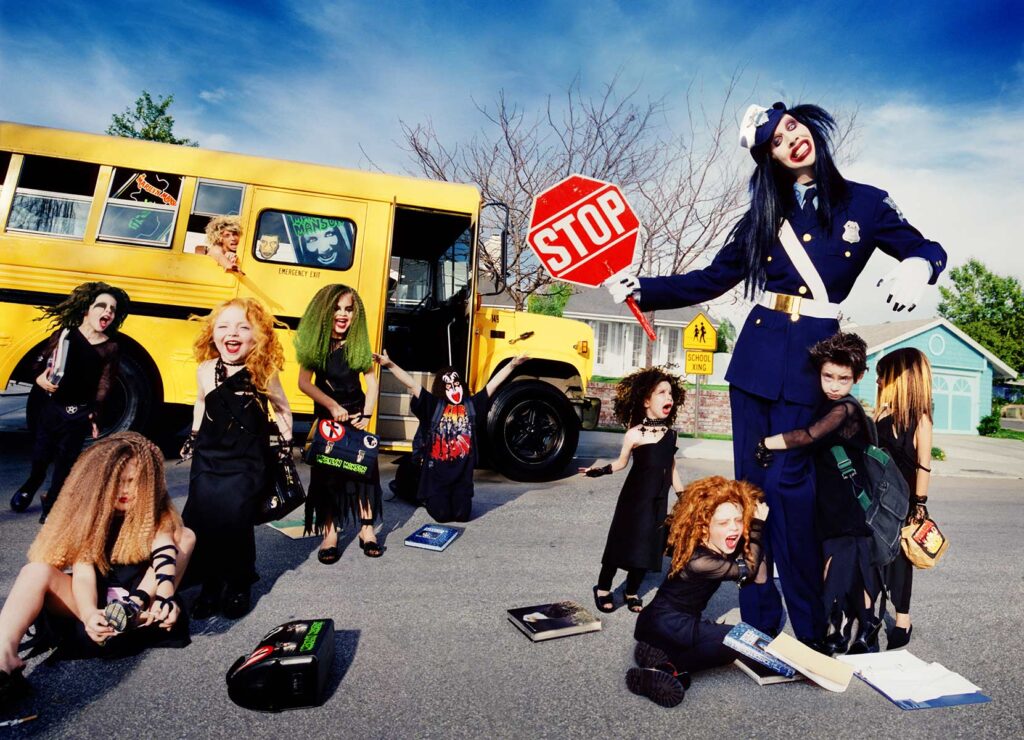
Los Angeles, 1997
David LaChapelle © All rights reserved.
Jose Jeuland: From your long life experience, what things do you believe should be changed or developed in the photography field?
David LaChapelle: In both photography and art, there’s a need for more love and light in all aspects. Art created from a pure base, with one hundred percent honesty, will get us in the right direction.
We know how fast society is moving. We don’t need to be just a mirror to society. We can also be a prism and not just a reflection of society. This is the true meaning of being an artist. We can also enlighten people through our work and put more attention on the return to nature. We are in the dark ages and need enlightenment, a new Renaissance.
VISIT: Instagram: @david_lachapelle | Website: www.davidlachapelle.com

